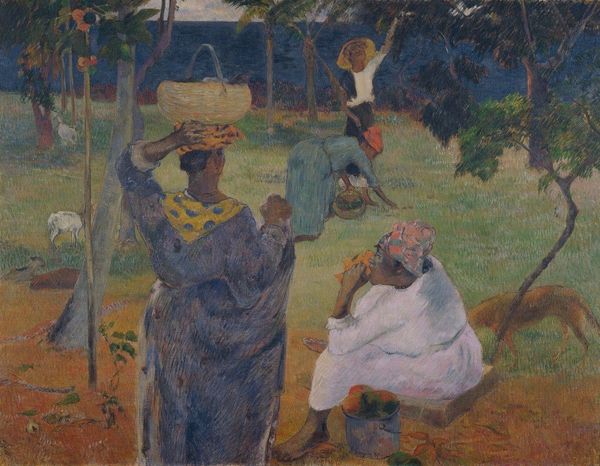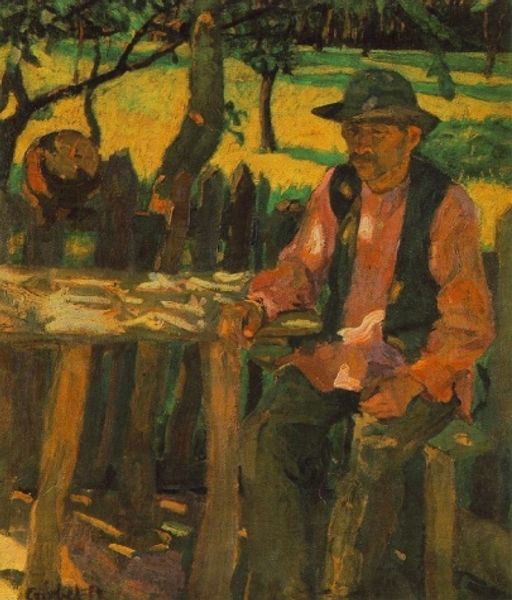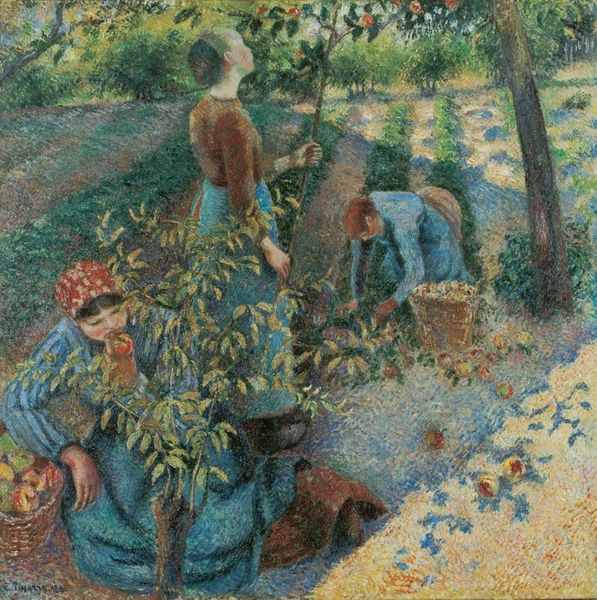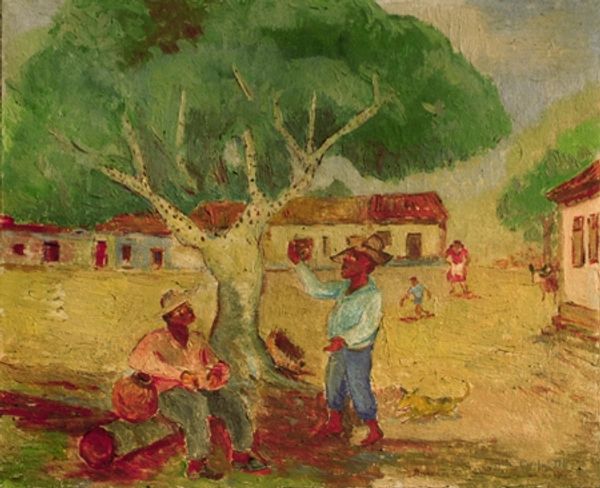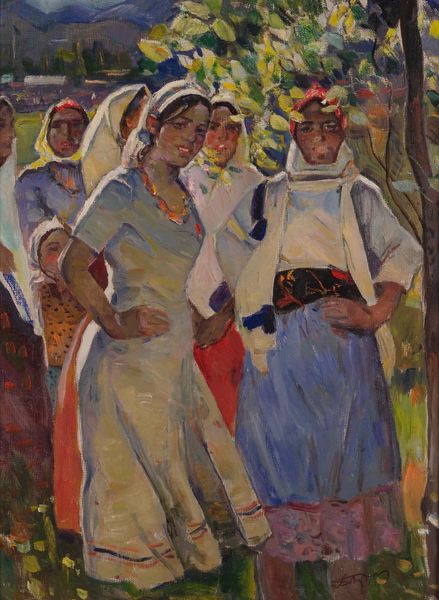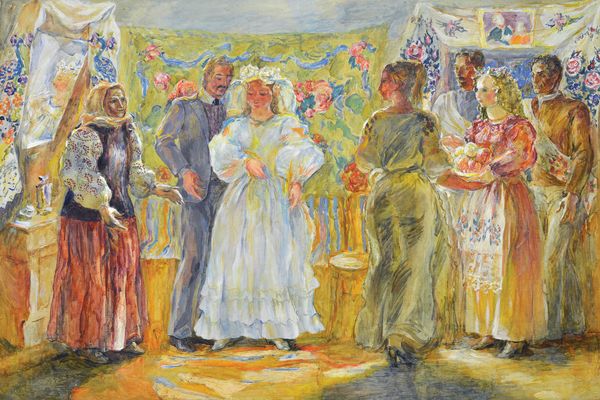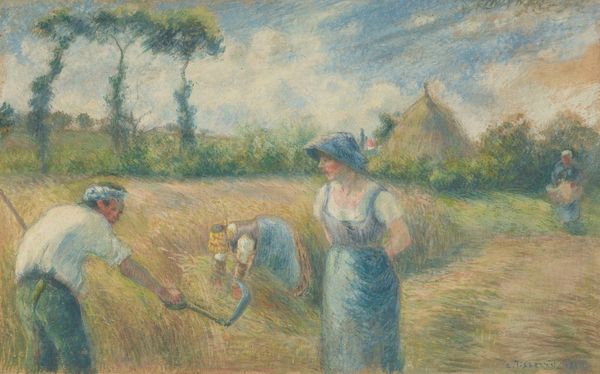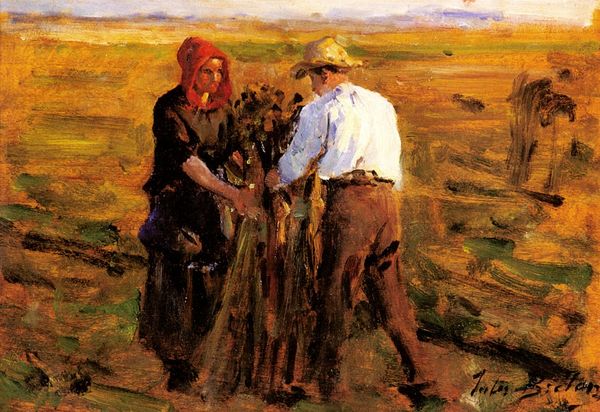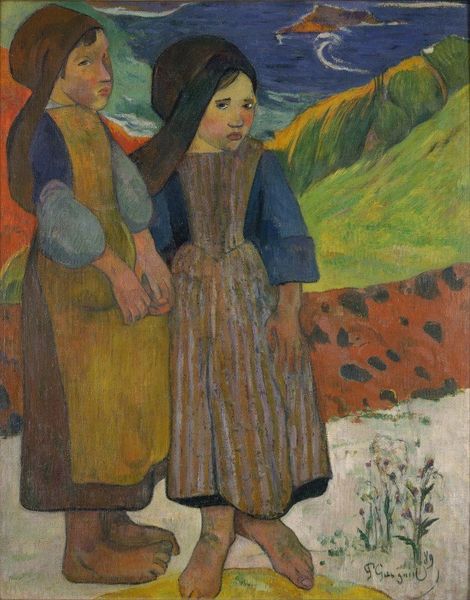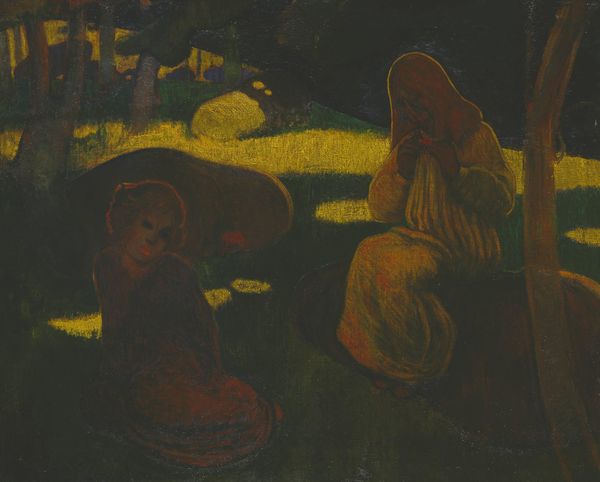
oil-paint
#
portrait
#
tree
#
canvas painting
#
oil-paint
#
landscape
#
figuration
#
oil painting
#
neo expressionist
#
forest
#
folk-art
#
expressionism
#
expressionist
Dimensions: 128 x 152 cm
Copyright: Public domain
Editor: Here we have Edvard Munch's "Fertility II," created in 1902 with oil paint. It depicts a man and woman amidst lush greenery. I find the rough brushstrokes quite striking; they lend a raw, almost urgent feel to the whole scene. What do you see in this piece? Curator: The emphasis, structurally, appears to lie within the opposition of vertical forms – the figures and tree trunks – against the vibrant field. Note how the canvas painting leverages a tripartite arrangement, framing the subjects through strategic arboreal placements. Semiotically, it evokes discourses of vitalism via figuration. The colour relations aren’t merely representational. Munch actively uses disharmonious greens, reds and blues for purposes other than direct copying of external facts. Editor: The “disharmonious” colors you mention… does that play into Expressionism, with the emotional impact taking precedence over realistic portrayal? Curator: Precisely. Colour ceases to be a descriptor and functions as an affective tool. The distortion within spatial dimensions creates visual unrest. Ask yourself what this purposeful deviation communicates about nature? Are we presented simply with observed natural forms or more about subconscious feelings projected toward nature? Editor: It's like he's externalizing an emotional landscape onto a literal one. That tension is palpable. Curator: Consider how surface textures influence our interpretation, too, a material reality manifesting affective depth. An image reveals a visual language capable of communicating unspoken and powerful meanings through subtle articulations. Editor: So much is embedded within the visible. I appreciate the different approach you have highlighted! Curator: Indeed; seeing goes beyond the optical registering of shape and colors, demanding active analytical skills.
Comments
No comments
Be the first to comment and join the conversation on the ultimate creative platform.

